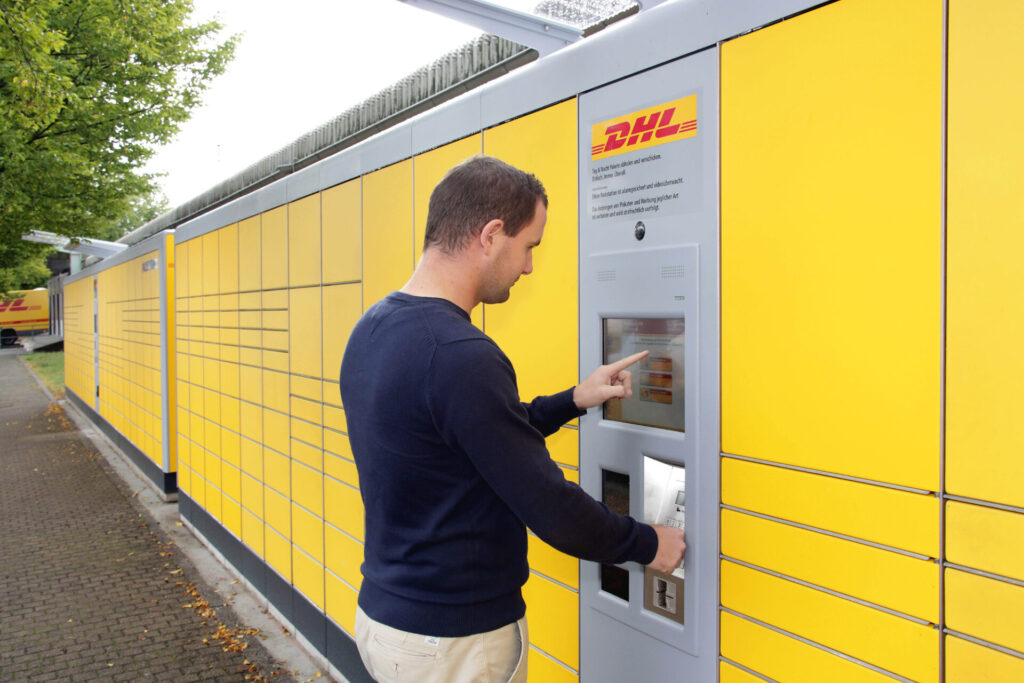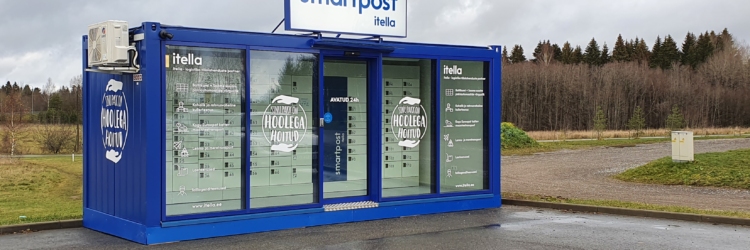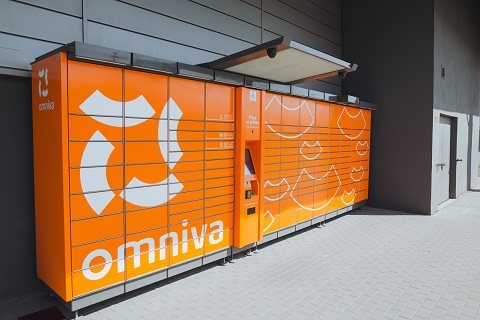Contactless Convenience: How Parcel Machines are Transforming Last-Mile Delivery
The paradigm shift brought about by parcel machines in last-mile delivery is nothing short of revolutionary. These automated lockers are reshaping the way we send and receive packages, providing an unparalleled level of efficiency and convenience. As we delve deeper into the transformative impact of these machines, it’s essential to explore how they are not merely streamlining delivery but fundamentally redefining the entire logistics landscape.
The adoption of parcel machines has opened up new horizons in last-mile logistics, a sector traditionally fraught with challenges. Traditionally, the final leg of delivery has been the most complex and costly, with navigating through dense urban environments leading to delays and increased operational expenses. However, by strategically placing parcel machines in high-traffic areas, such as shopping centers and transportation hubs, companies can optimize the last mile. This strategic placement not only reduces costs but also enhances overall operational efficiency, contributing to a more sustainable and economically viable logistics model.
The strategic integration of parcel machines also plays a crucial role in promoting sustainability within the logistics industry. By minimizing the need for multiple delivery attempts and optimizing routes, these machines contribute to a reduction in carbon emissions and fuel consumption. This eco-friendly approach aligns with the growing global emphasis on sustainable practices, making parcel machines a vital player in the pursuit of greener and more responsible logistics operations.
Parcel machines need to have ground anchor systems to work properly.
Redefining Last-Mile Logistics

Expanding on the transformative nature of last-mile logistics, it’s crucial to recognize how parcel machines are revolutionizing the traditional models of package delivery. The seamless and efficient solutions provided by these machines are not just addressing challenges but are actively reshaping the dynamics of the entire delivery process.
The deployment of parcel machines brings forth a host of advantages, one of the most notable being their ability to operate 24/7. Traditional delivery services are bound by specific working hours, limiting their flexibility. Parcel machines break free from these constraints, allowing customers to collect their packages at any time, day or night. This level of accessibility not only meets the evolving needs of the modern consumer but also sets a new standard for convenience in the logistics industry.
Moreover, the strategic deployment of parcel machines in residential areas serves as a direct response to the growing demand for convenient and secure delivery solutions. As urbanization continues to rise, optimizing last-mile delivery for residential consumers becomes increasingly critical. Parcel machines, with their user-friendly interfaces and secure compartments, provide a practical and efficient solution to address the unique challenges posed by residential deliveries.
The Dynamics of Contactless Delivery
Delving deeper into the dynamics of contactless delivery, it’s evident that this feature is not merely a response to current health concerns but a strategic move toward a more customer-centric approach. The ability to retrieve packages without direct human contact aligns seamlessly with the preferences of the modern consumer, who values efficiency, safety, and flexibility.
The contactless delivery model facilitated by parcel machines extends beyond safety considerations. It empowers customers with the flexibility to collect their packages at their convenience, eliminating the need to adhere to rigid delivery schedules. This level of flexibility is particularly crucial in a world where individuals have diverse lifestyles and commitments, providing a level of convenience that resonates with the dynamic nature of contemporary living. Parcel machines are great for storing branded merchandise.
Many companies still use couriers for package delivery. They often use rented cars for that because it is more affordable. If you need a vehicle you can rent it from rent a car Beograd.
Furthermore, the contactless nature of parcel machines enhances the overall security of the delivery process. With packages securely stored in lockers, the risk of theft or damage during the final mile is significantly reduced. This not only boosts customer confidence in the delivery process but also minimizes the operational challenges faced by logistics providers in ensuring the safe and secure transportation of goods.
This is great for home improvements. You can do your wallpaper installation consultation in Potomac MD and then order those wallpapers in the parcel machine.
Technology Driving Transformation

A detailed exploration of the technology driving the transformation of last-mile delivery through parcel machines reveals a sophisticated integration of software and hardware components. RFID technology, a cornerstone of these machines, plays a pivotal role in precise package tracking and management. This level of accuracy minimizes errors, enhances transparency, and ensures a seamless flow of information throughout the delivery process.
The incorporation of AI-driven algorithms further distinguishes parcel machines as a technological marvel. These algorithms optimize the allocation of packages to specific machines based on various factors, including delivery location, package size, and recipient preferences. This intelligent approach not only accelerates the speed of delivery but also ensures a personalized and customer-centric experience, setting a new standard for excellence in last-mile logistics.
Moreover, the technology-driven efficiency of parcel machines extends beyond the physical aspects of delivery. The data collected from these machines can be leveraged to gain valuable insights into consumer behavior, delivery patterns, and operational efficiency. This data-driven approach enables companies to continuously refine their logistics strategies, staying ahead of the curve in an ever-evolving and competitive market.
If you are looking to buy your own parcel machines you can contact a mortgage broker in Raleigh NC.
Overcoming Challenges and Future Prospects
While the advantages of parcel machines are undeniable, it’s essential to acknowledge and address the challenges that come with their adoption. Initial infrastructure investments, technological integration, and user familiarity are hurdles that must be navigated to ensure a seamless transition to this innovative last-mile delivery solution.
If you want to work in this industry you will have to enroll in online courses first.
Infrastructure investments, though necessary, can be perceived as a barrier to entry for some companies. However, it’s crucial to view these investments as a strategic imperative rather than a hindrance. The long-term benefits, in terms of operational efficiency, cost reduction, and customer satisfaction, far outweigh the initial financial commitments.
Technological integration, while a challenge, is also a cornerstone of the success of parcel machines. As technology continues to evolve, ensuring the compatibility and scalability of these machines becomes paramount. Companies investing in parcel machines must prioritize partnerships with technology providers to guarantee seamless updates and adaptations to emerging trends.
User familiarity is another challenge that can be addressed through comprehensive education and marketing efforts. As customers become more accustomed to the benefits of parcel machines, concerns and hesitations surrounding their use are likely to diminish. Transparent communication about the security, convenience, and environmental benefits of these machines is essential in fostering widespread acceptance.
If you want to sell your business so you can invest in parcel machines you can use the mergers and acquisitions services.
Looking to the future, the prospects for parcel machines appear promising. The ongoing advancements in robotics and artificial intelligence are poised to further elevate the capabilities of these devices. Enhanced robotics could lead to even faster and more efficient parcel handling, contributing to reduced delivery times and increased customer satisfaction.
The customization of delivery options is another avenue for future development. As parcel machines become more sophisticated, companies can offer customers a range of delivery choices, including temperature-sensitive storage for perishable items or the ability to schedule precise delivery times. These innovations align with the growing demand for personalized and flexible delivery solutions, catering to the diverse needs of the modern consumer.
Toward Hyper-Personalization
Looking beyond the horizon, the future of parcel machines beckons toward hyper-personalization. Imagine a scenario where these machines not only store and dispense packages but also cater to the individual preferences of recipients. Through the integration of advanced AI algorithms, parcel machines could analyze historical data and user behavior to curate a personalized delivery experience. From recommending optimal pickup times to providing tailored notifications, this level of customization could redefine what it means to receive a package, transcending the traditional boundaries of transactional logistics. Parcel machines need to have the best web hosting to work properly.
The advent of hyper-personalization extends beyond the digital realm, too. Picture a parcel machine equipped with modular compartments designed to accommodate diverse types of goods—from standard packages to temperature-sensitive items or even perishables. This innovative approach aligns with the growing demand for specialized delivery services and caters to the evolving needs of consumers who seek a seamless, end-to-end experience.
Eco-Friendly Initiatives and Sustainability
A pivotal frontier in the future of parcel machines lies in their role as champions of sustainability. As concerns for the environment intensify, there is an increasing need for eco-friendly last-mile delivery solutions. Future iterations of parcel machines could integrate green technologies, such as solar panels and energy-efficient components, to minimize their carbon footprint. Additionally, companies may explore the incorporation of sustainable materials in the manufacturing process, contributing to a more environmentally conscious approach to logistics.
Parcel machines are great for fragile things like fishing gear and stuff. If you love fishing be sure to use the bass fishing app when you go on a fishing trip.
Innovative approaches to packaging within the parcel machines could also contribute to sustainability goals. Picture a system where reusable and biodegradable packaging options are available within the machine, encouraging customers to opt for environmentally friendly choices. This shift not only aligns with global initiatives to reduce waste but also positions parcel machines as pioneers in promoting sustainable practices within the logistics industry.
Speaking of eco-friendly, if you are looking to buy an electric vehicle you can try one by renting it from Denver limousine service.
Collaborative Ecosystems and Network Optimization
The future of last-mile delivery through parcel machines envisions a collaborative ecosystem where multiple stakeholders join forces to optimize networks and enhance overall efficiency. Imagine a scenario where various logistics providers share a network of parcel machines strategically positioned across urban landscapes. Through a unified system, these providers could collectively reduce operational redundancies, minimize delivery times, and offer customers a seamless experience regardless of the courier service chosen.
To protect parcel machines from the rain many companies work with roofing contractors in Pennsylvania.
Furthermore, the collaborative nature of these ecosystems could extend to include local businesses, creating a symbiotic relationship between retailers and last-mile logistics. Local businesses could utilize parcel machines not just as delivery endpoints but also as convenient points of sale, fostering a dynamic interaction between e-commerce and brick-and-mortar establishments. This collaboration not only supports local economies but also expands the utility of parcel machines beyond traditional delivery services.
Security and Enhanced User Verification

The future development of parcel machines may place a heightened emphasis on security features and advanced user verification mechanisms. As the reliance on these machines grows, ensuring the safety of stored packages becomes paramount. Innovations could include biometric authentication, where users verify their identity through fingerprint or facial recognition, adding an extra layer of security to the retrieval process. It is important to collaborate with companies like the one that provides warehouse security in Los Angeles.
Parcel machines need to have HVAC systems to work properly. Most machines in the US are maintained by a company that works on HVAC in Concord NC.
Furthermore, the integration of blockchain technology could play a crucial role in securing the entire delivery chain. Each transaction, from the moment a package is deposited to its retrieval, could be recorded on a tamper-proof blockchain, ensuring transparency, accountability, and preventing unauthorized access. This enhanced security framework not only safeguards the interests of consumers but also instills confidence in businesses and logistics providers utilizing parcel machines as part of their operations.
Many parcel machines with transparent walls have Colorado shutters on them to prevent people from seeing what’s inside.
Conclusion
In the dynamic landscape of last-mile delivery, where parcel machines have emerged as transformative agents, the journey is far from static. The future promises a tapestry of innovations, weaving together the threads of hyper-personalization, sustainability, collaborative ecosystems, and advanced security measures. As we navigate this uncharted territory, the possibilities are as vast and diverse as the urban landscapes these machines serve.
In conclusion, the evolution of last-mile delivery through parcel machines is a testament to the relentless pursuit of efficiency and customer-centricity. The journey we have embarked upon is not just about streamlining the delivery process; it is a voyage into a future where logistics seamlessly integrates with the pulse of modern living. Embracing these future horizons is not a choice but an imperative for those aiming to stay ahead in the ever-evolving realm of last-mile logistics. The narrative continues, and the pages of innovation are waiting to be written as we embark on the next chapter in the saga of parcel machine revolution.

